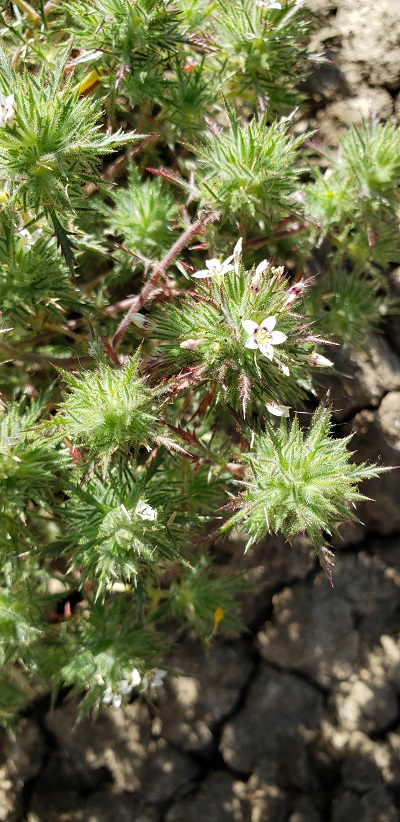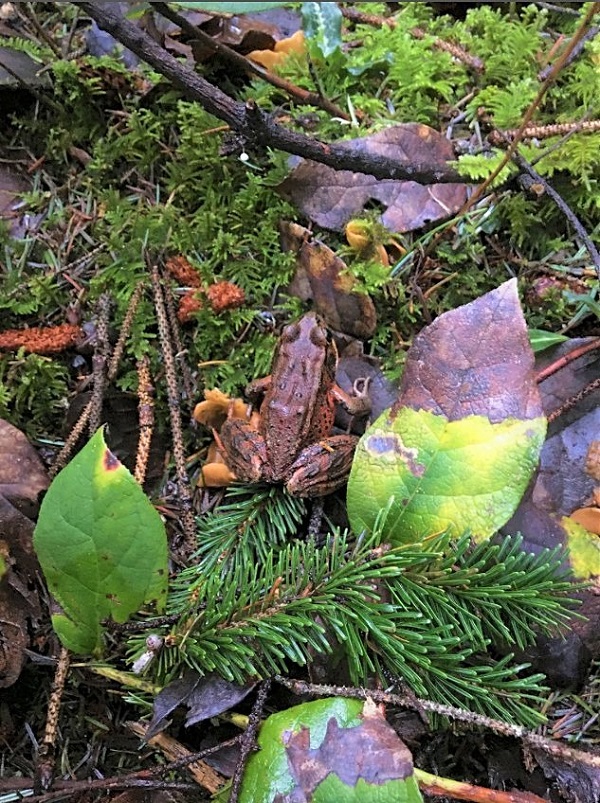2020 is here, and we continue our monthly spotlight of talented photographers and their wonderful photos of rare plants and animals submitted through the Online Field Survey Form. Here are a couple of our favorites to start off the year with:

Navarretia ojaiensis – Ojai navarretia
Submitted by Ryan Myers, SWCA Environmental Consultants
This extremely rare, endemic plant was found by Ryan Myers in Ventura County. It is listed as a 1B.1 (rare, threatened, or endangered in California and elsewhere, seriously threatened in California) in the California Rare Plant Ranking system. Navarretia ojaiensis can be found in openings in chaparral and coastal scrub as well as valley and foothill grasslands. It blooms from May to July, bringing a little color to those summer hikes. A big thank you to Ryan for this amazing photo and all the hard work you do!

Rana aurora – northern red-legged frog
Submitted by Risa Okuyama, Mother Earth Engineering
Risa came across this camouflaged northern red-legged frog near Big Lagoon in Humboldt county. The northern red-legged frog inhabits the northwest portion of the state in Del Norte, Humboldt, and Mendocino counties and is one of nine true frog species the database tracks. Their relatively long rear legs allow them to leap far distances making this their main mode of defense from escaping predators. They can be found in grasslands, woodlands, humid forests, and plant covered stream sides. Populations of Rana aurora face threats such as predation by the introduced American bullfrog and poor water quality. The northern red-legged frog was previously known as a subspecies of Rana aurora along with the California red-legged frog before being split into two separate species. Currently, CNDDB has 292 mapped occurrences of the northern red-legged frog all along the northern coast. Thank you, Risa, for catching a picture of this steadily posed amphibian!
Do you have some great photos of rare plants or wildlife detections? Submit them along with your findings through our Online Field Survey Form and see if your photos get showcased!